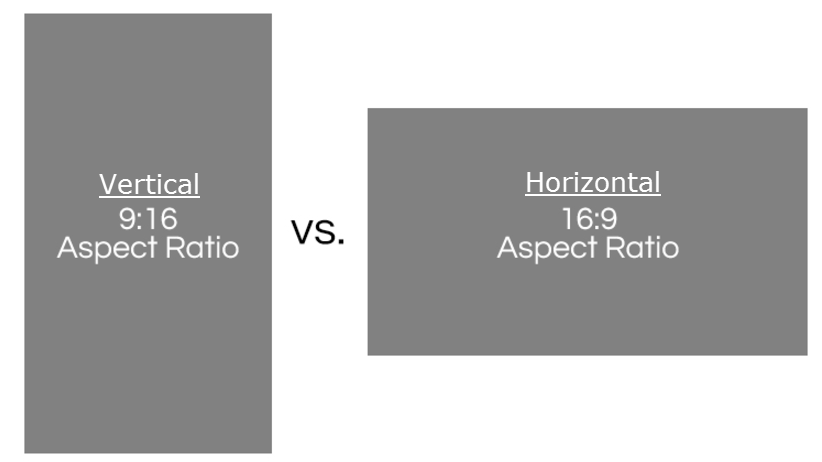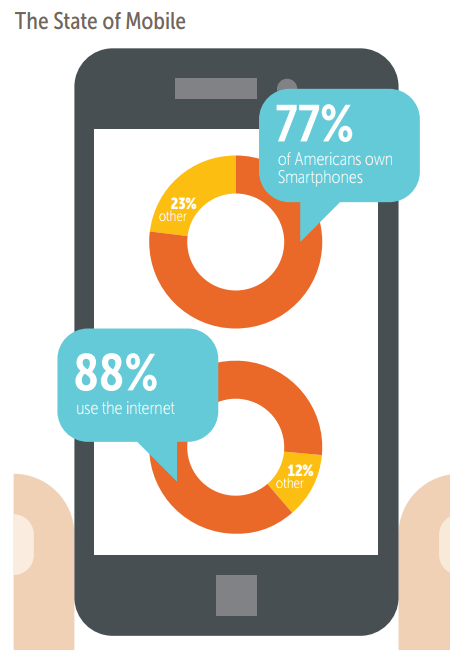Mobile web traffic has finally surpassed desktop, with BrightEdge reporting that 57% of all search traffic now comes from smartphones and tablets. The ad landscape is adapting in accordance. In a report on consumer trends, MediaRadar found an 8% increase in the number of mobile advertisers in Q1 YOY (16-17).
Considering that 77% of Americans own smartphones, it is clear that mobile advertising will continue to grow. The main question facing advertisers is how to best capitalize on this increasingly mobile market. One of the most successful iterations of mobile optimized advertising has been vertical video. (Although the format is still in its infancy).
What is vertical video?
Vertical video refers to videos that are shot and play on 9:16 aspect ratio as opposed the traditional horizontal, 16:9 aspect ratio. See the image below for clarification.

Why go vertical?
You want people to watch your ads:
-
Snapchat states that “vertical video ads have up to 9X more completed views than horizontal video ads.”
Facebook announced they will be updating their app to present videos vertically because they “found that vertical videos increase users’ watch time and the likelihood that a video is viewed with sound. In other words, vertical videos boost engagement rates. This raises the platform’s value to advertisers, which will benefit Facebook as well as publishers who run ads on the site.”
Youtube’s newly redesigned app now handles vertical video without any issue and adjusts to fit whatever size video you’re watching. It no longer locks you into a 16:9 space.
Where is the market now?

MediaRadar data found that 112 sites implemented vertical video strategies in Q1 2017.
Mobile video spend is predicted to reach $16.2 billion by 2021, and with early reports suggesting vertical video will provide 3 times the return of horizontal video, the format will undoubtedly continue to grow.
What’s holding vertical video back?
According to Todd Krizelman, CEO of MediaRadar, “It’s still early days for vertical video. Publisher scale has been low because it’s a new format with several barriers to entry. Publishers need resources- money, talent, and technology to build their capabilities.”
As such, The move to vertical video has been spearheaded by industry leaders including Hearst, Conde Nast, Time Inc. and NBC Universal. These are publishing powerhouses with the financial and structural means to engage in the trial and error necessary to optimize their vertical solutions. Obviously not all publishers and sites are at this level.
How do you get in on the action?
Here are few key trends MediaRadar recognized in regards to vertical video implementation:
Duration: 70% of vertical videos are running as 15 second spots
Placement: 90% of vertical videos are placed on the far right and always above the fold
Split vs. Full Screen: use the whole frame or embed horizontal video within a traditional static ad
And, here are our recommendations on how to win vertical video advertisers:
Build case studies by industry vertical, make your pitch industry specific
Stop shoehorning horizontal video into your pitches. MIgrate horizontal video advertisers by showing them the full capabilities and advantages of vertical video
Engage with pharma brands. As an industry, pharma sits largely on the sidelines in digital due to regulatory concerns. Vertical offers a great opportunity for regulated advertising.
Run your own tests, see which duration and messaging resonates best with your audience.





